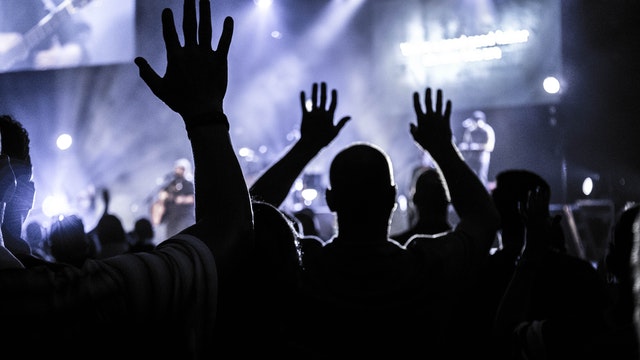What is mass psychology or crowd psychology? How does personal consciousness change within a large group of people? 9 Ways to Recognize Standard Handle Patterns
The ancient Greek legislator Solon of Athens noted that “each individual Athenian is a cunning fox, but when they get together, they become a herd of rams.” Perhaps this was the first entry in a textbook of a new science – the psychology of mass behavior. What does mass psychology study in the 21st century? Why and how does a person’s behavior change in a crowd? How to recognize manipulations? We talk about this and not only in the article.
What is mass psychology?

Psychology of the masses is a field of psychology that studies social consciousness, the characteristics of behavior and thinking of a large group of people united by common views and a common emotional state, driven by common interests, and also performing the same actions within a short period of time. Unlike the individual psychology of a particular person, the mass of people is characterized by a mental community. Therefore, the psychology of the masses is based on the opposition of the individual outside the human mass to him, who is inside the crowd.
By himself, a person exists, makes his choice, deliberately corrects his behavior. But everything changes when he is not alone, but in a crowd. Even without psychological pressure from the outside, he perceives the behavior of others, becomes infected with it, obeys, and follows it. Individual consciousness, as it were, dissolves, disappears, becomes part of the collective unconscious. The question of why the psyche of an individual reacts so sharply to the presence of many people remains open and fundamentally important for psychologists, sociologists, culturologists, philosophers, political scientists, lawyers, and security officials.
The scientific study of crowd psychology began after the events of the 1789 French Revolution. A century later, the French psychologist Gustave Le Bon became interested in the motives of the participants in the uprising. From the point of view of the scientist, their behavior was irrational, which aroused such interest. Later Le Bon had associates and followers – Sigmund Freud, Carl Jung, Vladimir Bekhterev. In psychology, a new direction was formed – “the psychology of mass behavior”, which in the 60-70s of the XX century grew into “the psychology of collective behavior”.
Psychology of the masses studies what happens to a person at the moment when he finds himself inside a crowd. In addition, psychologists and sociologists research:
- How the mood, thinking, the emotional mood of the crowd is created and changed.
- Motives, ideas, stereotypes of the crowd.
- What the crowd is capable of and what it strives for.
- The interaction of personality and mass.
- Spontaneous aggression, incidents, riots associated with mass consciousness.
- Cultural, ethnic, national characteristics of crowd behavior.
- How the “spiritual” unity of the masses is formed – the so-called “soul of the crowd”.
The psychology of the crowd and the team: similarities and differences.
What is mass psychology? Initially, a crowd means a large (or not so) crowd of people united by one place, common interest, and emotional state. But the crowd does not have a single goal that would require organization, discipline, and concerted action. Therefore, any crowd is called a crowd: from a group of passers-by who stopped to watch the performance of a street magician, to an aggressive mass fleeing from bulls in a bullfight. In some cases, mass behavior can be rational – for example, a meeting of city residents to resolve issues of concern.
Like any social phenomenon, the crowd can be defined for various reasons:
- By the type of management: spontaneous, driven, organized.
- By the type of organization: occasional (casual, associated with curiosity); conventional (collected based on interest); expressive or ecstatic (collected to express an attitude towards an event); acting (differs in the presence of active actions).
- By the degree of organization: heterogeneous (street), homogeneous (sects, castes, classes).
Panic and aggressive crowds, which lead to riots and clashes, are considered relevant, but the most difficult to study.
Collective behavior is different from mass behavior. The team unites in the name of a common goal – to eliminate injustice (ethnic, gender, social, religious) in society. Moreover, the participants do not have to meet regularly. They can act alone (go to lectures, collect donations) and from time to time get together (hold meetings, sign petitions).
Psychologists and anthropologists describe the mechanism of crowd formation as evolutionary regression. With a large crowd of people, most of them revive the lower layers of the most ancient part of the cerebral cortex. The achievements of civilization are blocked, the psyche returns to an early stage of evolution, and consciousness resembles the primitive consciousness of primitive ancestors.
Why does the crowd influence us?

The fact that we are drawn into the crowd is also a deep need – from time to time to get rid of the burden of a social role, restrictions, and norms of behavior. I would like to relax, shout at a rock concert, shout at the stadium or dissolve among the people at the fair. These ancient mechanisms of mass recreation are tenacious even today. They help relieve tension, relieve unnecessary aggression, “breakaway” from responsibilities,
Being inside the flow of people, an individual:
- Forgets about cultural, ethical, or moral norms, stops analyzing his behavior.
- He commits acts that he would never have done “in his right mind”: goes to cruelty, commits murder.
- Submits to the general sameness and even ceases to resist.
- Loses freedom of action and a sense of responsibility.
- Instantly “absorbs” other people’s emotions that prevail over the mind, forcing them to act impulsively.
- Stops communicating verbally with individuals.
- Mimics the general movements of the leader or the majority of the crowd.
Sigmund Freud described two phenomena crowd characteristics that explain this behavior. These are “infectiousness”, which is considered hypnosis, and “suggestibility”, when the majority reacts not to argumentation, but to slogans, individual symbols. The strength of the crowd is not in unanimity, but in the “avalanche effect.” As soon as it is possible to influence some of the people, the rest begin to shout, wave slogans, or move purely by inertia. Skillful manipulators take advantage of this.
How to protect yourself from manipulation?
The individual ceases to control his behavior as soon as he gets into the crowd and becomes himself again as soon as he leaves it. It is possible to fully realize one’s potential, reveal talent, and be useful only in individual activities. But there is a problem: one is not a warrior in the field. There is only one way out – not to succumb to manipulation from the outside.
Forewarned is forearmed. Here are 9 popular psychological tricks that subtly but surely affect people.
1. Presupposition.
This is one of the most used NLP models, allowing speech to create “a reality in which only the necessary behaviors exist.” Presupposition helps to gently convince a person that something is going to happen.
For example, a politician agitates voters: “When I am president, I will do …”. And he does not even discuss the option that this will not happen.
2. Flattery.
A simple but effective technique “below the belt”, with which the manipulator tries to put another in a good mood and use it to his advantage. Here we are working on the opponent’s self-esteem: compliments, encouragement, words of gratitude.
For example, a supervisor convinces employees to go to work on the weekend: “I know that you are responsible workers, so you can spend your day off and do urgent work.”
3. Pre-choice.
It works according to the principle: we choose the lesser of two evils. On the one hand, there are no prohibitions and there is a right to choose. But on the other hand, there are no other answer options besides the suggested ones.
For example, in advertising, we are offered: “Choose Fanta or Sprite (burger or cheeseburger)?” Although both brands belong to the same manufacturer.
4. Inspiration.
Inspiration helps to work without fatigue, to make discoveries, to believe in your superpowers. So when manipulators want to persuade someone for a feat, they organize inspiration for him.
For example, the commander before the battle says to the soldiers: “What you are doing is necessary! You will succeed! All for the sake of peace on earth! “
5. Emotional attack.
Playing on emotions is an easy way to get the right actions from employees, relatives, and friends. This is a repeated repetition of the same requirements, a change in intonation, an attempt to unwind the feeling of guilt.
For example, the teacher shames the class: “I treated you like adults, and you let me down. Do you know how the director scolded me because of you? “
6. Social proof.
The so-called herd instinct is remembered by most of the inhabitants of the Soviet Union, who stood in line only because it was a symbol of scarcity. “If everyone takes it, then it’s a good thing,” thinks a person who does not want or does not have time to understand the situation.
For example, when people want to choose from a large number of gadget models, they are guided by ratings and reviews. And they do not even think that reviews are written by “their” employees from the manufacturing company.
7. The principle of mutual exchange.
The rule says: a person needs to answer well for good. And since any obligations are depressing, you want to get rid of them as quickly as possible. Skillful manipulators use this – they provide a small service and wait for a reciprocal arrangement.
For example, religious sectarians distribute free literature on the street, and in return ask to listen to their instructions.
8. Motivation by fear.
Fear is a powerful human emotion and a fail-safe motivator. Therefore, in order to force a person to do something, you need to scare him “in advance”: talk about a future car breakdown or warn him about an article for theft.
For example, the work of insurance companies is based on the intimidation of people – the more frightening examples are given, the more often insurance policies are bought.
9. Non-verbal communication.
In a crowd, non-verbal signs (gestures, facial expressions, movements) are captured and transmitted much faster than words. Therefore, manipulators add emotions and colors with posture, intonation, friendly gestures, and laughter.
For example, the world’s dictators convinced people before they began to speak: they became taller than their listeners in order to look down on them. They supplemented their performances with sweeping movements, active movement around the hall – in order to take up as much space as possible and further confirm their importance.
What is mass psychology? The psychology of the masses is more often associated with manipulation, dictatorship, and mind control. But this area of psychology has positive sides – it is the organization of festivals, carnivals, festive processions that help to plunge into the crowd, take a break from the burden of restrictions and responsibilities. Another thing is that such mass events must be carefully organized. Otherwise, you can destroy something you need. Bastille, for example. www.lovepsychologys.com


